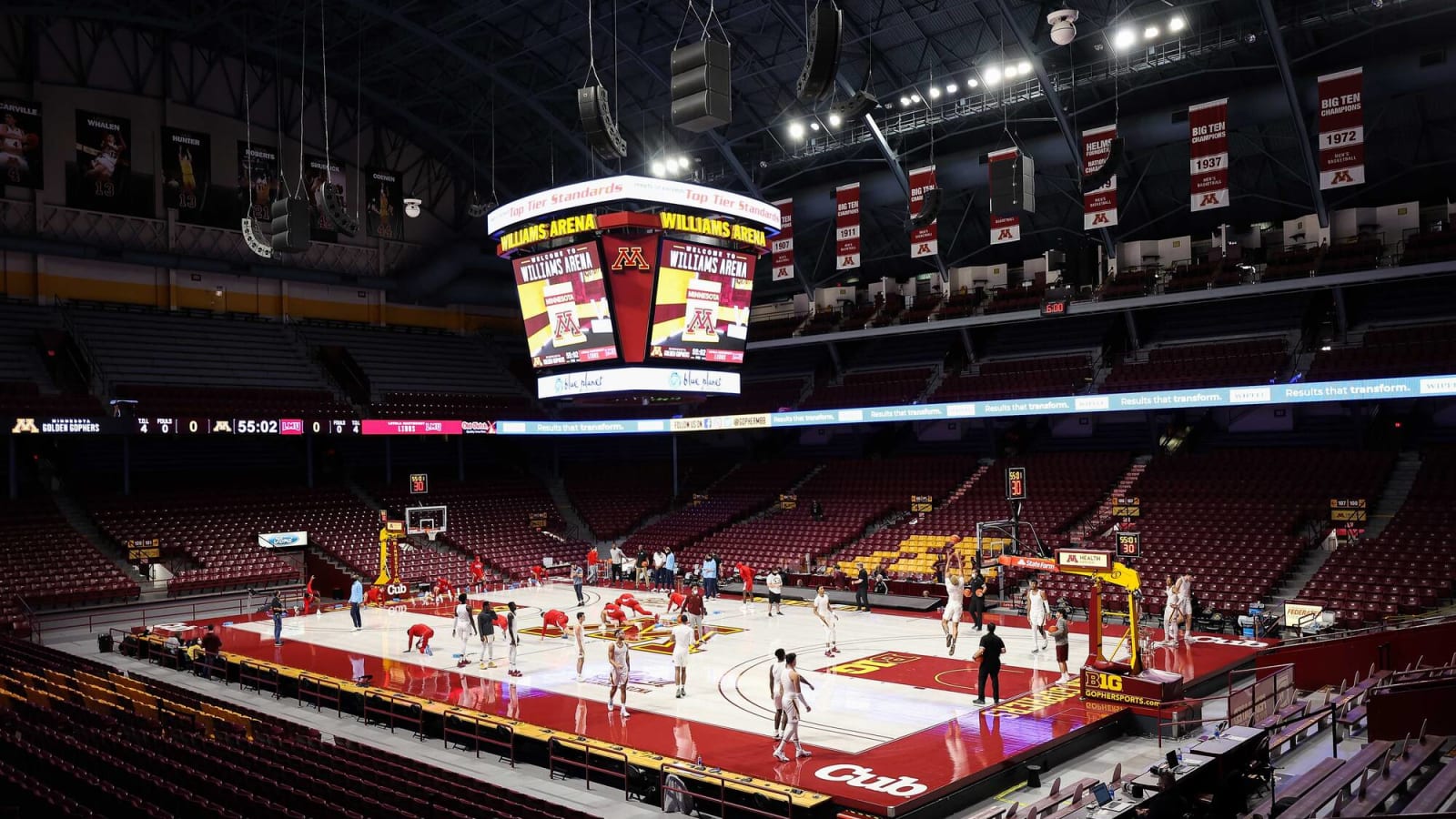
In 2023-24, 3rd-year head coach Ben Johnson took a Minnesota Gophers men’s basketball team, previously left for dead, and molded them into a group that Tom Izzo and others believe has a very bright future. This year’s squad more than doubled their win total from last season and finished with a respectable 19-14 record, losing in the 2nd round of the NIT Tournament on Sunday afternoon.
But… fans did not follow that success to Williams Arena, which ranked 12th in the Big Ten in average spectators during the 2023-24 season, at just over 8,100 per home contest (55% capacity). Speaking of The Barn, fans and seating capacity, some news broke on that front this weekend.
Williams Arena renovation could include significantly less seats
Seating capacity at Williams Arena topped out at 18,025 spectators from 1950 to 1971, but has slowly dwindled since. Today, The Barn holds 14,625 fans, which has been capacity since in 1997. But it looks like another reduction is on the way, according to whispers that have caught the ear of Charley Walters (Pioneer Press).
“There’s been whispering about reducing Williams Arena seating capacity (14,625) to about 10,000. The Gophers men’s team this season averaged 8,139 spectators, 12th in the 14-team Big Ten.”
Pioneer Press’ Charley Walters on possible Williams Arena shrinkage
While it’s still possible the University of Minnesota decides to build a new basketball facility, it’s growing more and more unlikely. Instead, the expectation is a major renovation of Williams Arena, a decision/planning process that started a while ago.
A renovation for The Barn is long overdue, so this is all welcomed news for anyone who wants the Gophers to continue playing basketball games at historic Williams Arena. But not all reports that have been of the positive variety, including the possible elimination of the arena’s iconic raised floor.
But now they’re reducing the max capacity? Why would they want less fans at the Barn. A 4,500 seat reduction is a significant drop-off, too. That’s just over 31% of possible fans no longer allowed in the building. What gives?
Should we be mad about reduced seating at Williams Arena?
Well, it isn’t the lack of success that is forcing the University of Minnesota to adapt, though losing certainly doesn’t help bring anyone into Dinkytown. Sports fans are no longer coming out to watch live events in mass, like they used to.
Unless the Gophers are going to morph into a perennial power (unlikely), then putting 14,000 people in the Barn could continue to pose problems, especially as we move into a future where less and less fans could be attending live events in-person.
We’ve seen this new idea around smaller seating capacity at major professional and collegiate sports, since even prior to the pandemic. Northwestern, for example, can’t get enough capacity reductions at Welsh-Ryan Arena, which started at 9,500 fans in the 1950s, before it was even named Welsh-Ryan Arena.
It’s most recent capacity reduction came in 2017-18, when they it from 8,100 all the way down to 7,000. And now, that place is a madhouse. Compare Welsh-Ryan with football games at Ryan Field… and trust me (I’ve done it) you’ll take the reduced seating venue every time.
Would I prefer a fully packed 15,000-capacity Barn during Gopher games? Sure, I’d like a lot of things. But some dreams — including this idea that fans are going to come rushing back to Williams Arena anytime in a foreseeable future that includes greater technology and viewing capabilities than ever before — aren’t based in reality. So, as long as they do the renovation right, a seating capacity reduction at the Barn won’t be a negative, it’ll be a net positive.
More must-reads:
- Winners and losers from Day 2 of the 2024 NFL Draft
- Juwan Howard returning to NBA as Eastern Conference assistant
- The '100 catches in an NFL season' quiz
Breaking News
Customize Your Newsletter
 +
+
Get the latest news and rumors, customized to your favorite sports and teams. Emailed daily. Always free!

